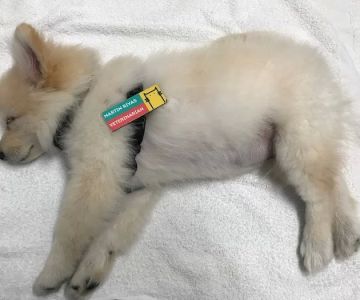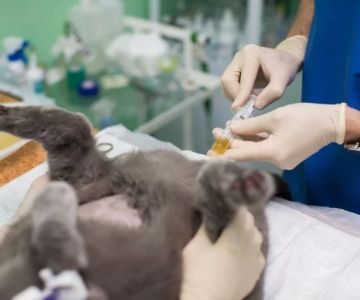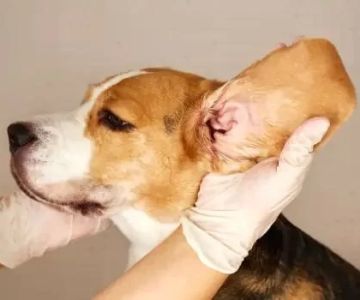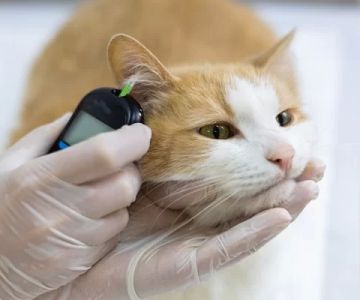How to Help a Cat Stop Biting When Playing
When I first adopted my cat, Luna, I quickly realized that she was full of energy and had a love for playtime. However, there was one issue that I hadn’t anticipated—her habit of biting during play. At first, I thought it was just part of her playful nature. But as time went on, the playful nips turned into more frequent and harder bites, which started to concern me. I knew I had to address the issue before her playful behavior became a more serious problem. Through trial and error, I discovered several effective techniques to help Luna stop biting during play. If you’re facing a similar challenge with your cat, here are the steps that worked for us.
Understanding Why Cats Bite During Play
Before jumping into solutions, I needed to understand why Luna was biting during play. Like many cats, Luna had a natural instinct to hunt. Playful biting is often a way for cats to practice and hone their predatory skills. When a cat chases and pounces, they might bite to subdue their "prey." This is completely normal in the wild, but it can become problematic when a cat applies the same behavior during play with their human companions.
Another reason cats bite during play is simple overstimulation. When a cat is really excited and engaged in a game, they may become so focused on the activity that they lose control. This can lead to biting as a form of escalation. At first, I wasn’t sure whether Luna’s biting was just part of her nature or if it was a behavioral issue that needed addressing. As I learned more about her body language and the types of games that led to the biting, I realized that she wasn’t being aggressive; she was simply getting too carried away.
Steps to Help Your Cat Stop Biting During Play
Once I understood the root causes of Luna’s behavior, I knew I needed to implement a few strategies to curb the biting. Here are the steps that helped Luna—and will hopefully help your cat too!
- Use Interactive Toys: One of the first changes I made was to switch from using my hands during play to using interactive toys like feather wands, laser pointers, and balls. These toys allow Luna to engage her predatory instincts without any risk of her biting me. I found that when I used toys that kept her focused on the object rather than my hands, she was much less likely to bite. Feather wands are especially good because they mimic the movements of prey, which satisfies her hunting instincts while keeping her at a safe distance.
- Stop the Play When Biting Occurs: I learned that one of the most effective ways to teach Luna that biting isn’t acceptable was to immediately stop the game when she bit. Whenever she nipped or bit my hand during play, I would stop the play immediately and walk away for a few moments. I wanted to make it clear that biting resulted in an end to the fun. After a few repetitions, Luna began to understand that biting meant no more playtime, which eventually helped reduce the behavior.
- Redirect Attention to Appropriate Targets: Sometimes, cats bite because they need something to chew on. To redirect Luna’s behavior, I provided her with safe alternatives, such as chew toys and catnip-infused items. I found that giving her something to sink her teeth into during play helped her get her energy out without resorting to biting. I also made sure that she had access to scratchers and other enrichment tools to keep her mentally stimulated.
- Teach Gentle Play: During quiet moments, I started gently petting Luna’s paws and engaging with her in a calm way, reinforcing the idea that we can play together without roughness. When she gently nuzzled my hand or sat calmly beside me, I made sure to reward her with treats and positive reinforcement. The goal was to reinforce that calm, non-biting play was the preferred behavior. Positive reinforcement worked wonders in shaping Luna’s behavior over time.
- Recognize Signs of Overstimulation: I became more observant of Luna’s body language, especially during play. If she started twitching her tail or her pupils dilated, I knew that she was getting overstimulated and that the next step would likely be biting. When I noticed these signs, I would pause the play and give her a break. Recognizing when she was getting too worked up helped me prevent bites before they happened.
The Importance of Consistency and Patience
One of the most important things I learned throughout this process was the importance of consistency. Luna didn’t change her behavior overnight, and it took time for her to fully understand that biting was not an acceptable part of play. Every time she bit, I made sure to stop the play immediately, and every time she played gently, I rewarded her. Patience was key. Cats, like humans, need time to learn new behaviors, and Luna was no different.
It was also important to stay consistent with the type of toys and methods I used. Switching between methods or toys too frequently might confuse Luna, so I made sure to stick to a routine and allowed her time to adapt. Over time, as Luna began to associate calm play with rewards, the biting became less frequent.
Dealing with Play Aggression in Cats
If your cat is showing signs of aggression during play—such as harder biting or hissing—it could be a sign that the behavior goes beyond just excitement. In Luna’s case, her biting was purely playful, but I understand that some cats may have a more aggressive streak. In those situations, I found that consulting with a vet or animal behaviorist could be incredibly helpful. An expert can provide insight into whether your cat’s biting is related to something more serious, like fear or stress. With Luna, however, I found that simple playtime redirection and positive reinforcement were enough to curb the behavior.
My Personal Experience with Luna
After several weeks of consistently using these techniques, I saw a remarkable improvement in Luna’s behavior. The biting became less frequent, and I felt more confident that she understood the boundaries during play. We continued to bond through interactive toys, and I made sure to always keep an eye on her body language to prevent overstimulation. Now, Luna enjoys playful, gentle interactions, and I no longer have to worry about painful bites during our sessions. The progress we made together was rewarding, and it strengthened our bond even more.
If you’re dealing with a cat who bites during play, don’t get discouraged. With patience, consistency, and the right approach, you can help your cat stop biting and enjoy a more positive and gentle play experience. Luna and I are proof that with the right techniques, it’s possible to transform a biting habit into a fun, enjoyable interaction for both of you.












